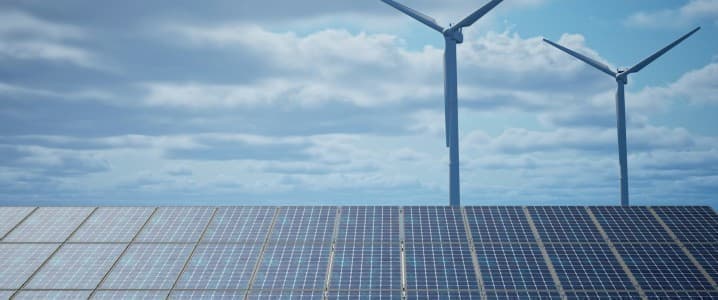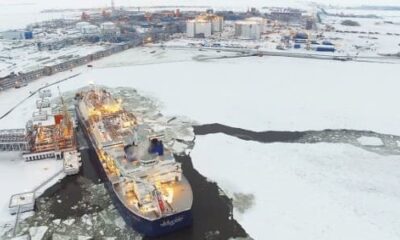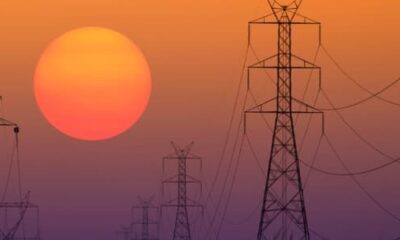Business
Global Power Purchase Agreement Prices for Solar and Wind Shift

Changes in equipment costs, interest rates, and power prices have led to a significant shift in power purchase agreement (PPA) prices for solar and wind energy worldwide. Recent analyses indicate that the breakeven prices for solar photovoltaic (PV) and onshore wind have diverged sharply, with global average costs for onshore wind increasing while those for solar PV are decreasing.
According to a report by Rystad Energy, global solar costs are expected to stabilize within a narrow range over the next five years. In contrast, wind costs are projected to rise, showing greater variability across different regions. While the costs of projects are critical, other factors also play a crucial role.
Onshore wind projects typically benefit from higher capture prices, allowing for more favorable project economics despite greater initial development costs. The analysis reveals that fair value PPA prices for solar PV are generally lower than those for onshore wind globally. However, geographical disparities significantly influence these prices. The capital expenditure (capex) intensity for onshore wind, which varies widely, is primarily shaped by project costs and the power market prices in the respective locations.
Over recent decades, the capex intensity of solar projects has dramatically decreased due to technological advancements and increased manufacturing capacity. This drop has seen capex intensity fall from over $5 per watt in 2010 to an anticipated $0.80 per watt this year. With more than 90% of the global manufacturing capacity for solar PV components located in China, projects worldwide often utilize Chinese components, resulting in a relatively narrow capex intensity range. By 2025, this range is expected to stabilize between $0.80 and $1.00 per watt.
In contrast, the capex intensity for wind energy has increased from an average of $1.14 per watt in 2020 to $1.59 per watt in 2023. This rise is attributed to inflation and higher interest rates affecting manufacturers. The median capex intensity for onshore wind has now surpassed $1.50 per watt and is predicted to remain at this level through to 2030. The upper quartile is expected to exceed $2.00 per watt, further widening the gap with the median.
The cost of capital and resource potential are significant factors influencing breakeven prices for projects. In the analysis of 35 markets by Rystad Energy, both solar and wind projects show high sensitivity to assumptions regarding the discount rate, or cost of capital. Higher costs of capital in many developing countries can disadvantage renewable energy projects, especially in regions lacking sufficient solar or wind resources. Breakeven power prices for solar PV typically range from $6 to $8 per MWh, while for onshore wind, they range between $9 and $11 per MWh.
Operating expenditures (opex) have a relatively minor impact on these breakeven prices, as neither energy source involves fuel inputs. Changes in opex assumptions tend to have limited effects on project economics, especially for solar PV.
Another crucial factor affecting PPA price levels is the capture rates, which reflect the average price actually earned relative to market prices. Wholesale power prices vary significantly across regions, influenced by generation mix, grid infrastructure, and demand patterns. For instance, the California Independent System Operator (CAISO) reports the lowest wholesale prices, while regions in Australia such as New South Wales and Western Australia experience some of the highest.
Solar PV generally has a lower capture rate compared to wind, primarily due to its generation profile, which tends to overlap with peak demand hours. This phenomenon, known as the cannibalization effect, compresses revenues as competition increases. Although the expansion of energy storage is underway, it has not yet matched the rapid growth of solar, limiting flexibility in the market.
The analysis shows that solar capture prices in regions with high solar penetration can fall to around 40%, while onshore wind often maintains a capture rate above 80% in most markets.
Looking at PPA prices across the analyzed markets, solar PV prices are typically lower than those for onshore wind. The lowest PPA price for solar PV is recorded in Saudi Arabia, at $16.3 per MWh. Other regions such as the UAE, India, China, and parts of Europe also report low PPA prices due to favorable conditions and low costs. Conversely, the highest PPA prices are predominantly associated with onshore wind projects in countries like Germany and Italy, where costs are higher and capacity factors tend to be lower.
As the renewable energy landscape continues to evolve, understanding these shifts in PPA prices will be crucial for stakeholders looking to invest in solar and wind projects globally.
-

 Entertainment2 months ago
Entertainment2 months agoAnn Ming Reflects on ITV’s ‘I Fought the Law’ Drama
-

 Entertainment3 months ago
Entertainment3 months agoKate Garraway Sells £2 Million Home Amid Financial Struggles
-

 Health2 months ago
Health2 months agoKatie Price Faces New Health Concerns After Cancer Symptoms Resurface
-

 Entertainment2 months ago
Entertainment2 months agoCoronation Street’s Carl Webster Faces Trouble with New Affairs
-

 Entertainment2 months ago
Entertainment2 months agoWhere is Tinder Swindler Simon Leviev? Latest Updates Revealed
-

 Entertainment3 months ago
Entertainment3 months agoKim Cattrall Posts Cryptic Message After HBO’s Sequel Cancellation
-

 Science3 weeks ago
Science3 weeks agoBrian Cox Addresses Claims of Alien Probe in 3I/ATLAS Discovery
-

 Entertainment2 months ago
Entertainment2 months agoOlivia Attwood Opens Up About Fallout with Former Best Friend
-

 Entertainment3 months ago
Entertainment3 months agoMarkiplier Addresses AI Controversy During Livestream Response
-

 Entertainment3 months ago
Entertainment3 months agoMasterChef Faces Turmoil as Tom Kerridge Withdraws from Hosting Role
-

 Entertainment4 months ago
Entertainment4 months agoSpeculation Surrounds Home and Away as Cast Departures Mount
-

 World2 months ago
World2 months agoCole Palmer’s Mysterious Message to Kobbie Mainoo Sparks Speculation













